- »Possible Worlds« Stockholm, 2023
- »On Coexistence, Rivers and Stories« Berlin, 2023
- »Of Domes and Toilets - Architecture and Social Architecture are One« Berlin, 2019
- »Indigenous Knowledge« Stockholm, 2016
- Group Exhibition »DRAWN« Berlin, 2014
- »In a New Land« Berlin, 2011
- »Burning Man« Stockholm, 2010
- Group Exhibition »SUMMER SHOW« Berlin, 2009
- »Rural Studio: The Lucy House Tornado Shelter« Berlin, 2007
- »Caracas: Dry Toilet« Stockholm, 2004
- »Caracas: House with Extended Territory« Berlin, 2003
- Group Exhibition »Through a Sequence of Space« Berlin, 2002
-
Marjetica Potrč: The Soweto Project, Jurisdictions, MIT Press, 2017
-
Andres Lepik and Marjetica Potrč: Cities in Transition, 2014
-
Twylene Moyer: Marjetica Potrč – The Art of Sustainable Self-Sufficiency, 2011
-
Marjetica Potrč: New Territories in Acre and Why They Matter, e-flux Magazine, 2009
-
Jennifer Higgie: Marjetica Potrč. Form Follows Function, Frieze Magazine, June 2006
-
Jan Verwoert: Marjetica Potrč. Confessions of a Global Urbanist, Afterall Magazine, Spring/Summer 2004
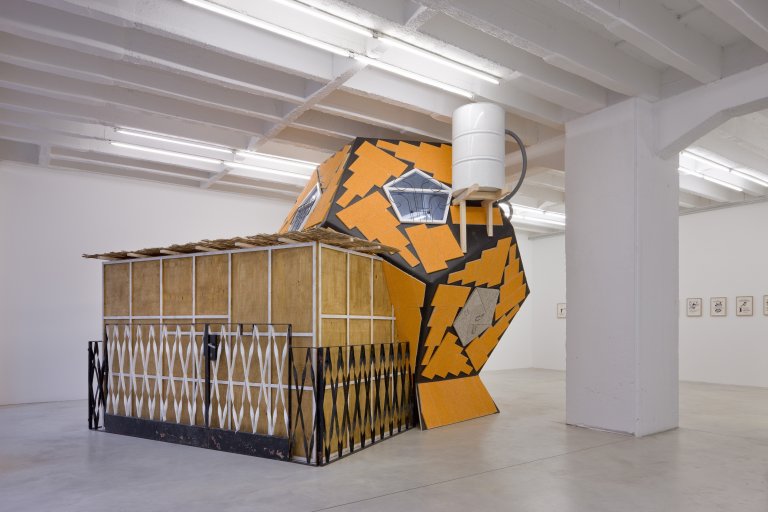
Ramot Polin Unit with Sukkah, 2011, building material and water-supply infrastructure
Marjetica Potrč »In a New Land«
Berlin, October 22, 2011 - January 21, 2012
Galerie Nordenhake is pleased to present “In a New Land”, Marjetica Potrc’s 4th solo exhibition at the Berlin gallery. The Slovenian artist and architect is internationally renowned for her on-site projects in which her multi-disciplinary approach merges art, architecture and social science. Employing an architectural case study from Israel, the artist investigates the socio-political consequences of the implosion of a previously pre-ordained, modernist space.
In the gallery, Potrc combines the dodecahedral unit designed by Israeli architect Zvi Hecker in Ramot Polin (Jerusalem) with a sukkah, a temporary shelter used during the religious festival of Sukkot. In addition to the architectural structure, the artist presents three series of drawings that explore issues deriving from the Jewish colonization of Palestine, in particular, the original communal utopianism of the kibbutz movement and its betrayal (“In a New Land”), the need for self-protection (“From Walls to Islands”), and the rise of consumerism (“The World of Things”). Ultimately, she finds hope in a new urban model based on the kibbutz ideals of openness, sharing, and coexistence.
The settlement of Ramot Polin was built in the ‘70s as a social housing project; it was part of the expansion of Jerusalem into the territories Israel occupied after the Six-Day War (1967). This symbolic architecture with its cell-like structure (popularly called “the housing project for honeybees”) was meant to suggest the collective spirit and openness of the Jewish society – despite its location on occupied territory. Forty years on, the Orthodox Jewish residents of Ramot Polin have built rectangular extensions on to the facades. Many of these are sukkahs, and they have substantially transformed the formal coherence of the architecture, thus making visible the failure of the modernist ideology that informed Hecker’s original project.
Perched on the pentagonal facades, the sukkahs convey a dual message that aptly illustrates the internal divide in Israeli society between the secular and the religious. On the one hand, by “balkanizing” the modernist architecture, they are an implied critique of the modern lifestyle; on the other, as intentionally temporary shelters they reaffirm the nomadic spirit – an architectural reminder of the ancient Israelites’ wandering in the desert after the Exodus from Egypt. Thus, the sukkahs of Ramot Polin articulate an unstable balance between the nomadic and the settled way of life as a basic human condition. In this paradoxical architectural case study, Potrc again deals with counter-concepts to the modernist utopia of the “functioning city”. Taken together with the three drawing series, Potrč’s work proposes viable solutions based on lived experience, where security is achieved not through barrier walls, possessions and ownership claims but through the principles of sharing and coexistence.The exhibition is kindly supported by JCVA, The Jerusalem Center for the Visual Arts and Heradesign Ceiling Systems.
Marjetica Potrc is an artist and architect based in Ljubljana and Berlin. Her work has been featured in exhibitions throughout Europe and the Americas, including the São Paulo Biennial in Brazil (1996 and 2006), the Venice Biennial (1993, 2003, and 2009) and Skulptur Projekte Münster (1997); and she has had solo shows at the Barbican Art Gallery in London (2007), Kunsthalle Fridericianum Kassel (2004) and the Guggenheim Museum in New York (2001). Her many on-site installations include: Between the Waters: The Emscher Community Garden for “Emscher Kunst” (2010), The Cook, the Farmer, His Wife and Their Neighbour (Stedelijk Goes West, Amsterdam, 2009), and Dry Toilet (Caracas, 2003). She is currently a professor at the University of Fine Arts (HfBK) in Hamburg and has taught at several other universities in Europe and North America as well, including MIT (2005) and IUAV University in Venice (2008, 2010). She has published a number of essays on contemporary urban architecture. She is the recipient of numerous grants and awards, most notably the Hugo Boss Prize (2000) and the Vera List Center for Arts and Politics Fellowship at The New School in New York (2007). She is currently engaged on the on-site project Théâtre Evolutif for “Evento 2011” in Bordeaux.

Ramot Polin Unit with Sukkah, 2011, building material and water-supply infrastructure
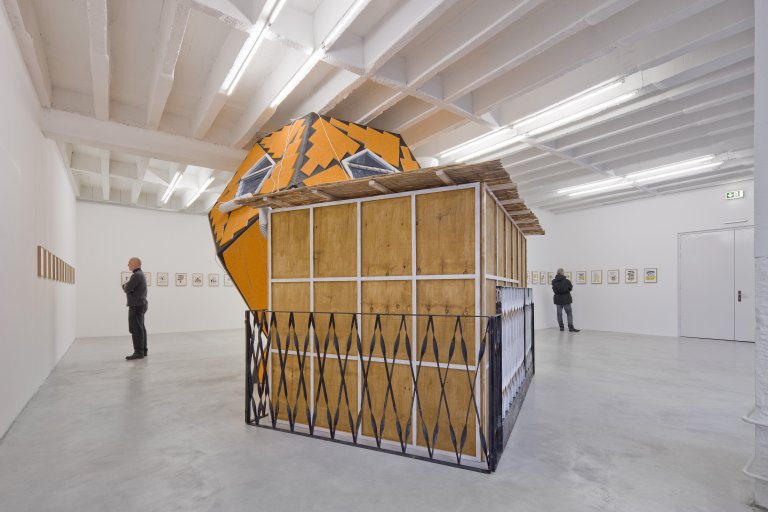
Installation view
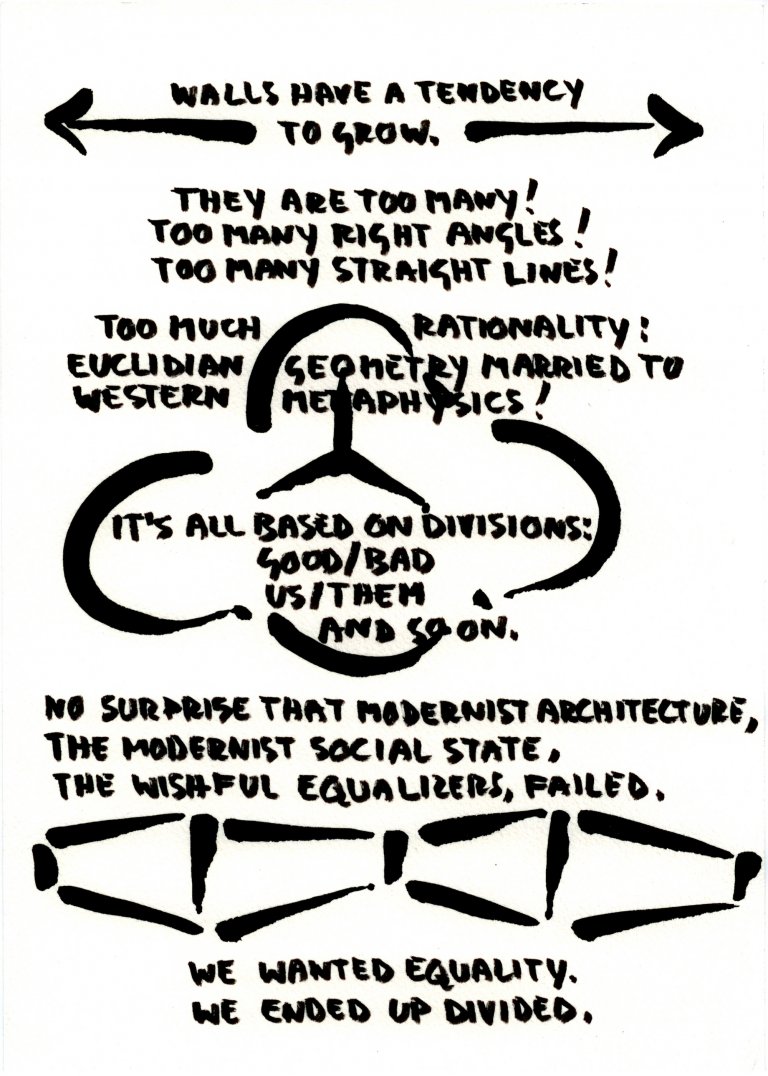
From Walls to Islands, 2011, series of 12 drawings, ink on paper, each 29.7 x 21 cm, detail of drawing no. 6
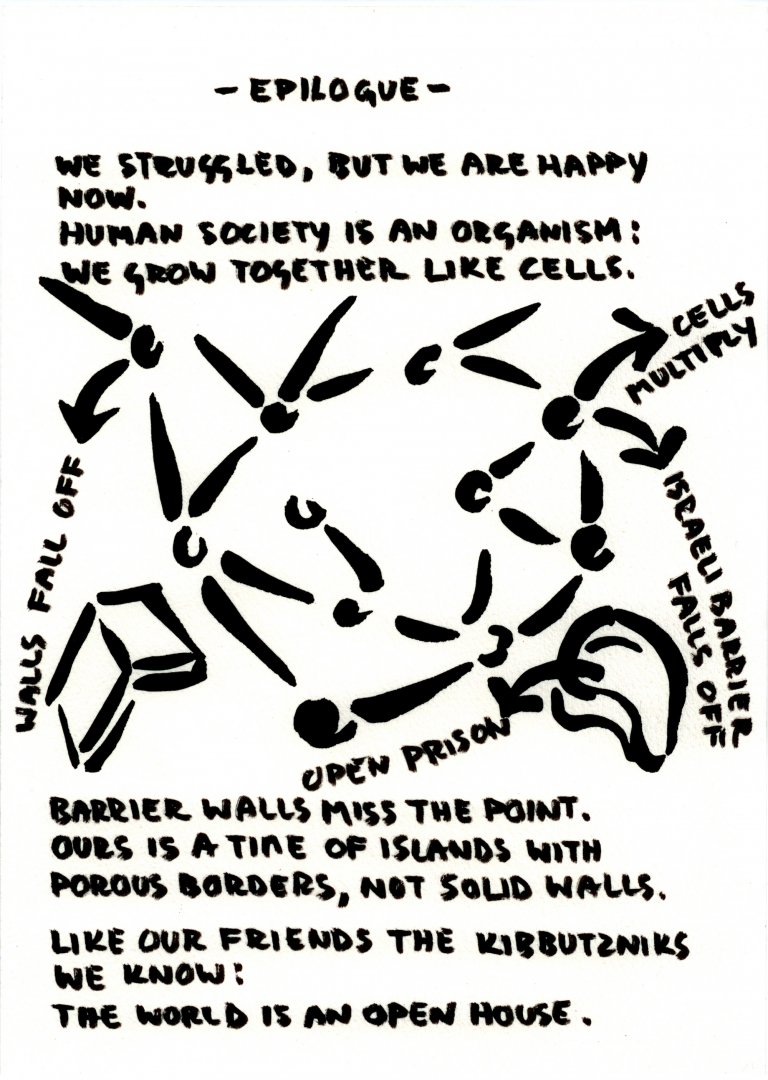
From Walls to Islands, 2011, series of 12 drawings, ink on paper, each 29.7 x 21 cm, detail of drawing no. 12
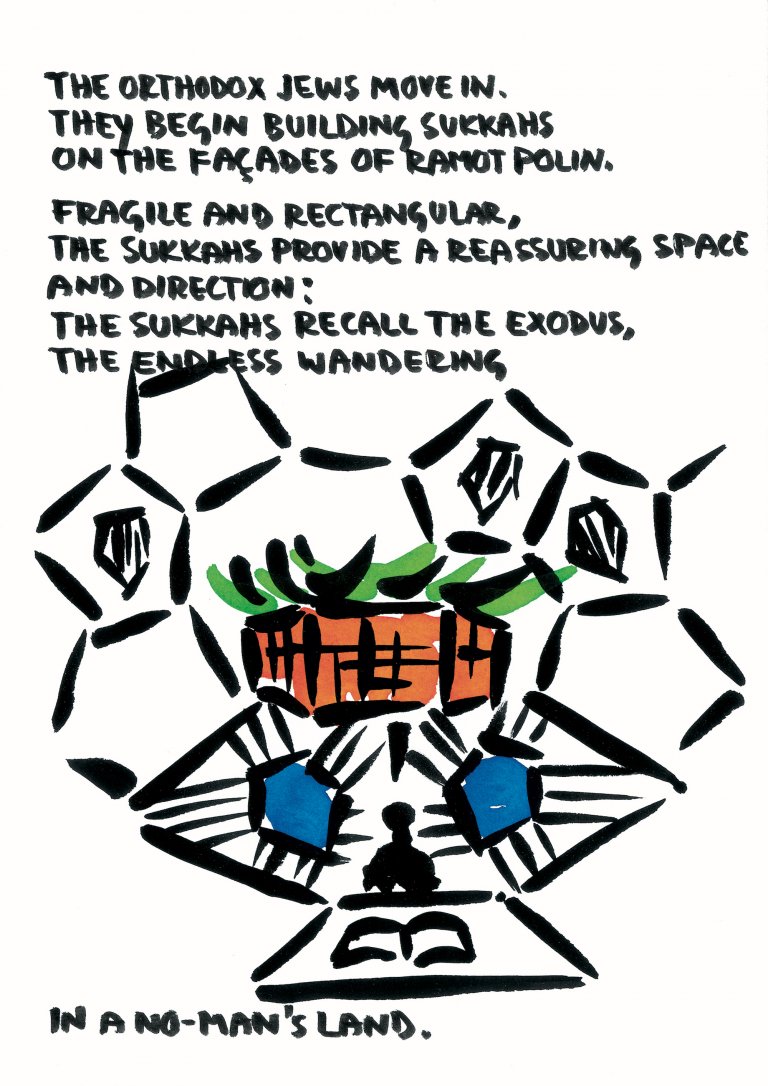
In a new Land, 2011, series of 11 drawings, ink on paper, each 29.7 x 21 cm, detail of drawing no. 9
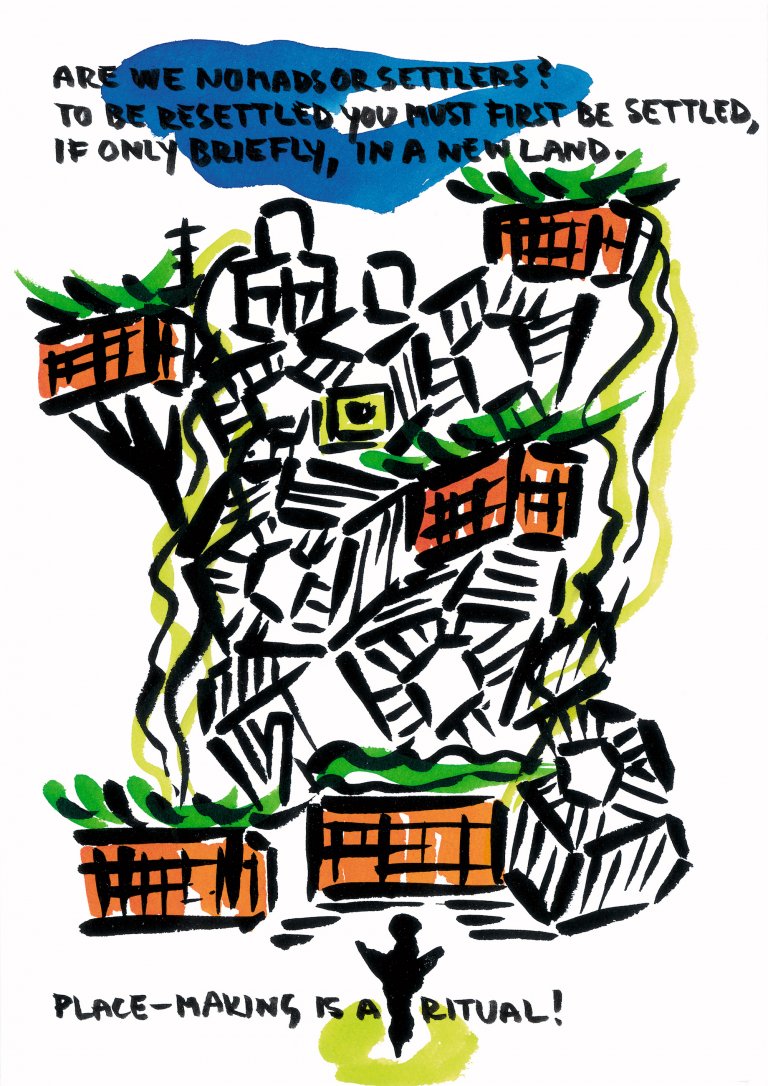
In a new Land, 2011, series of 11 drawings, ink on paper, each 29.7 x 21 cm, detail of drawing no. 10
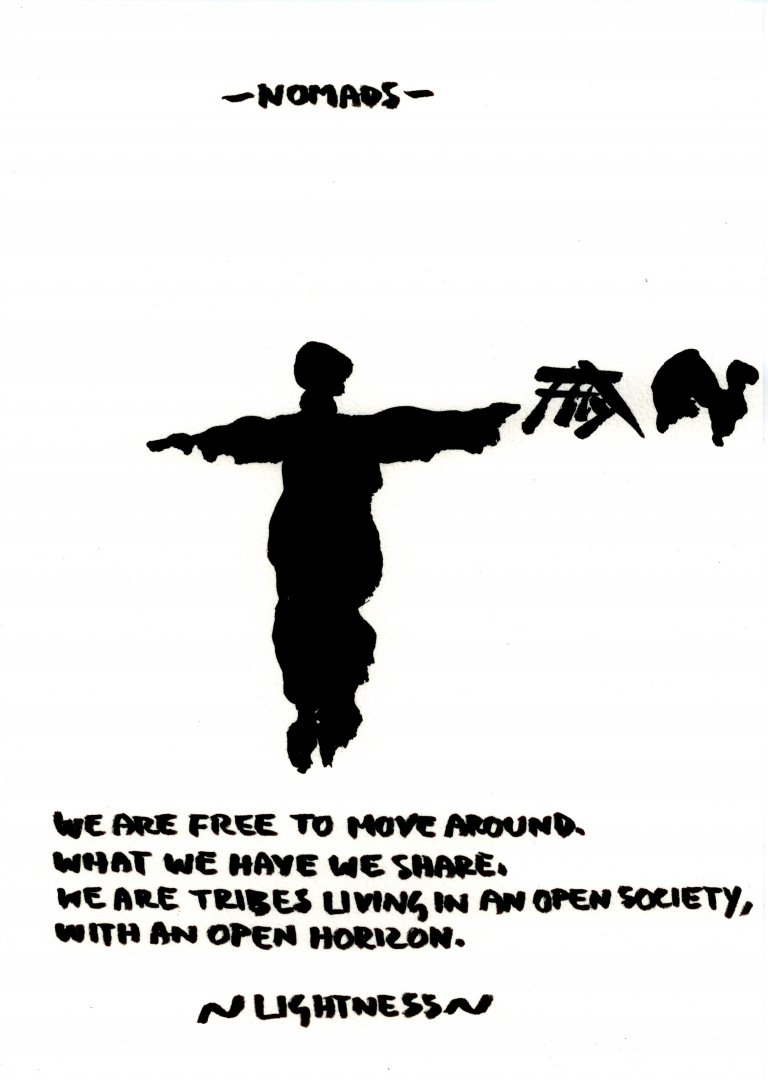
The World of Things, detail, drawing no. 1
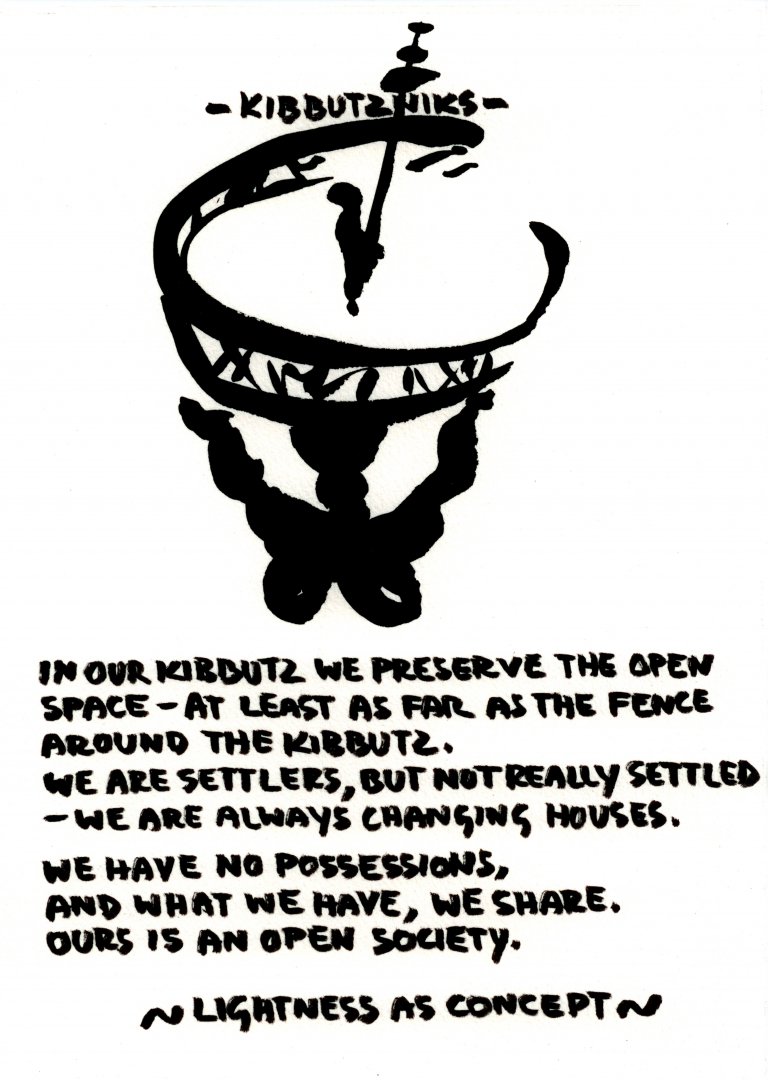
The World of Things, detail, drawing no. 2
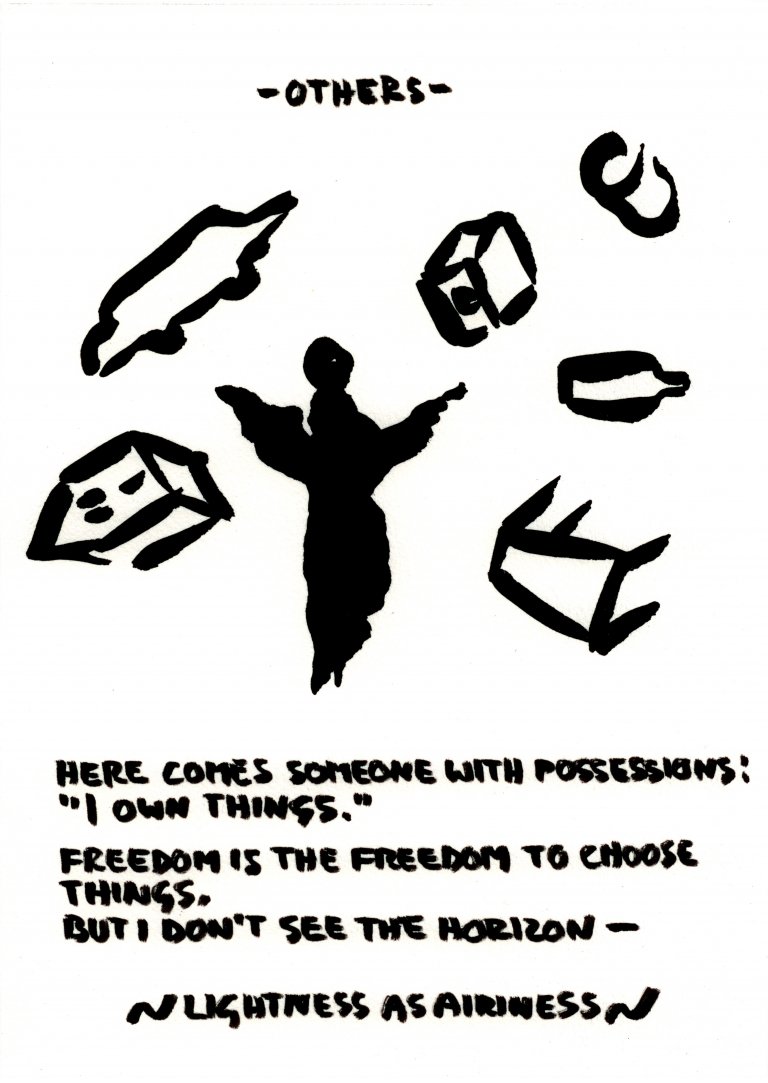
The World of Things, detail, drawing no. 3
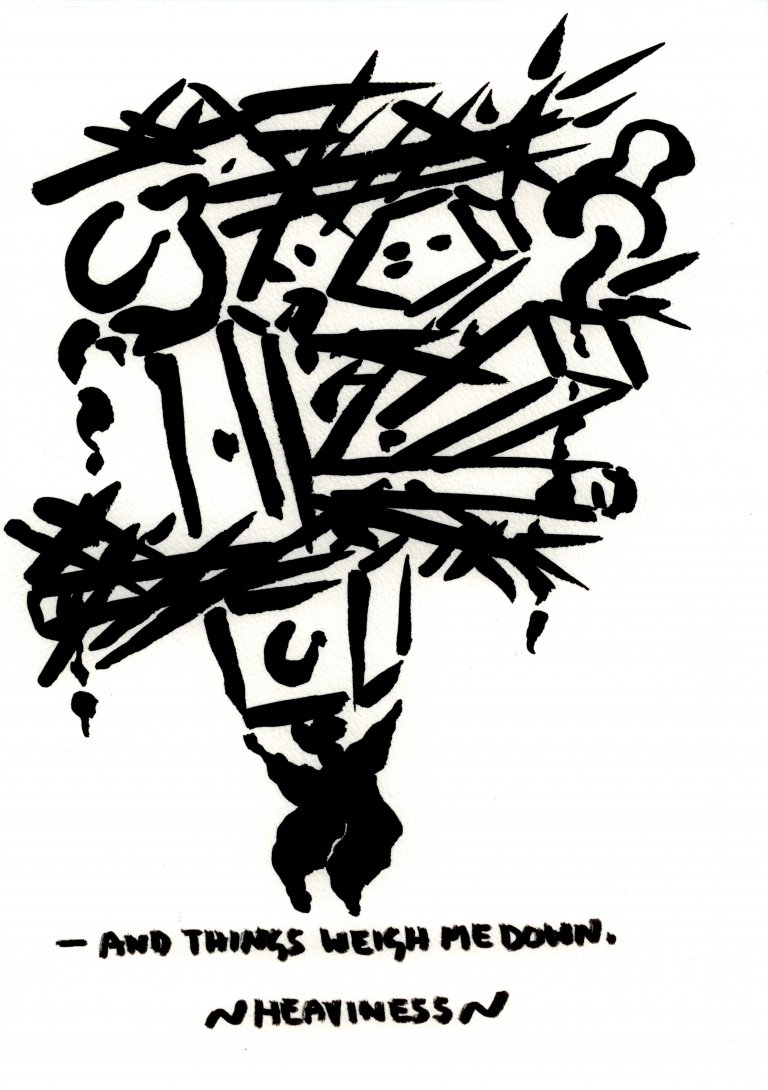
The World of Things, detail, drawing no. 4
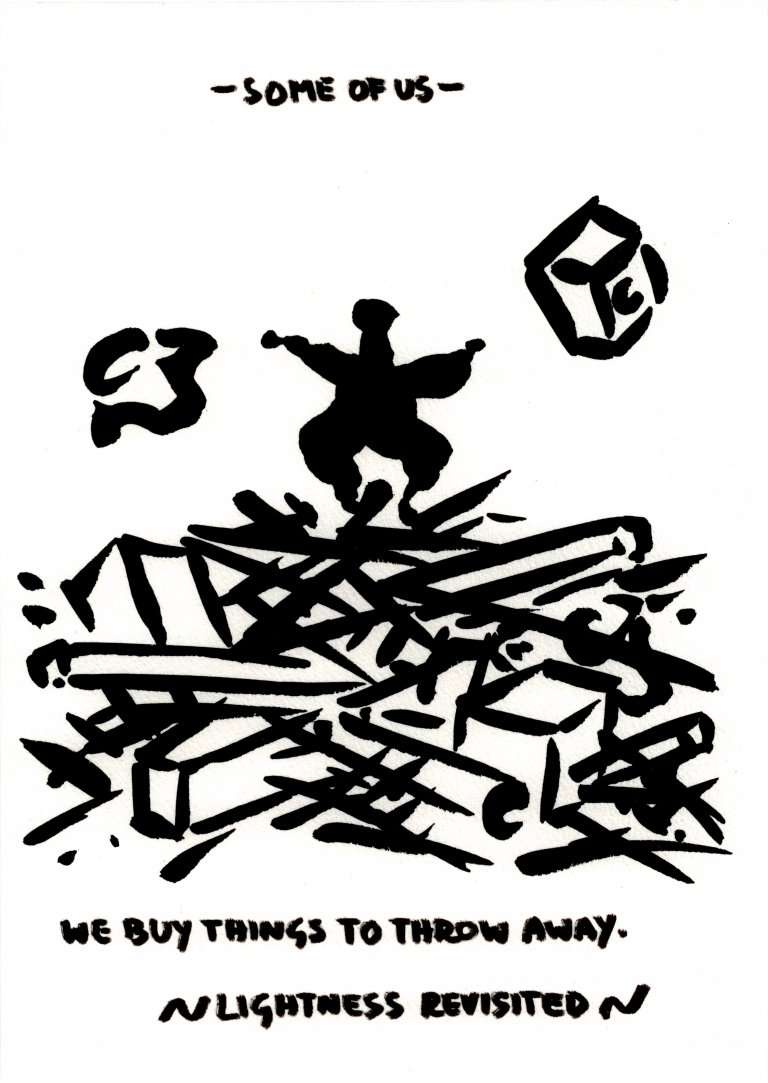
The World of Things, detail, drawing no. 5
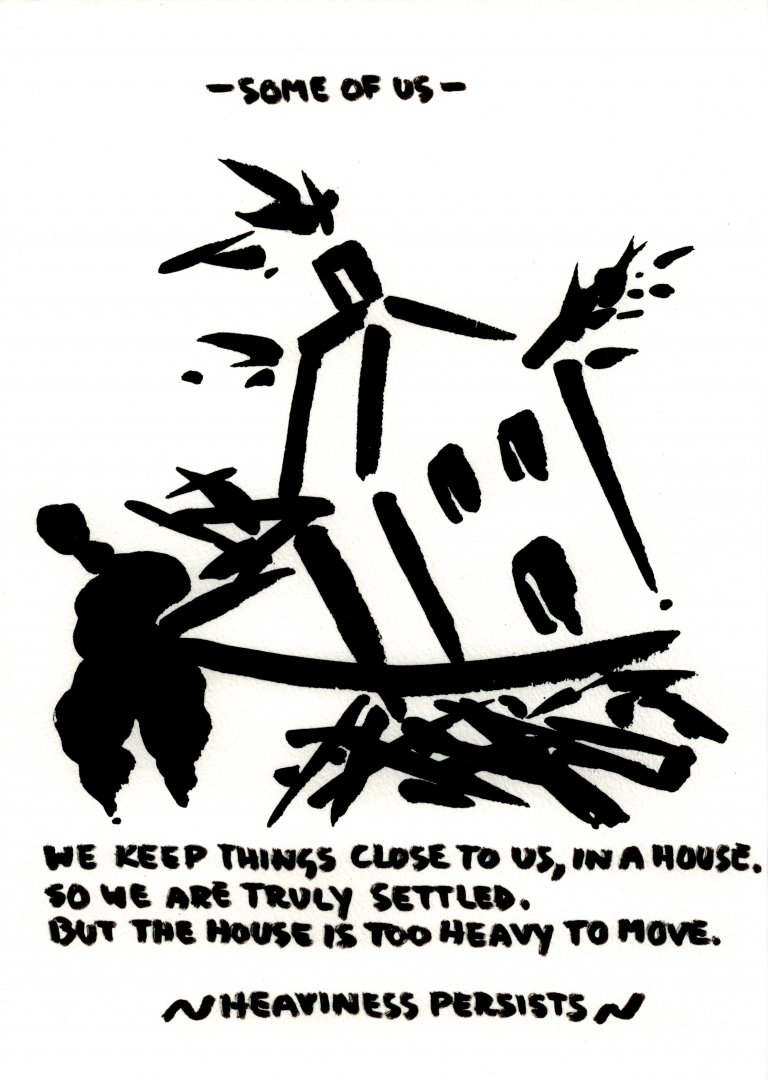
The World of Things, detail, drawing no. 6
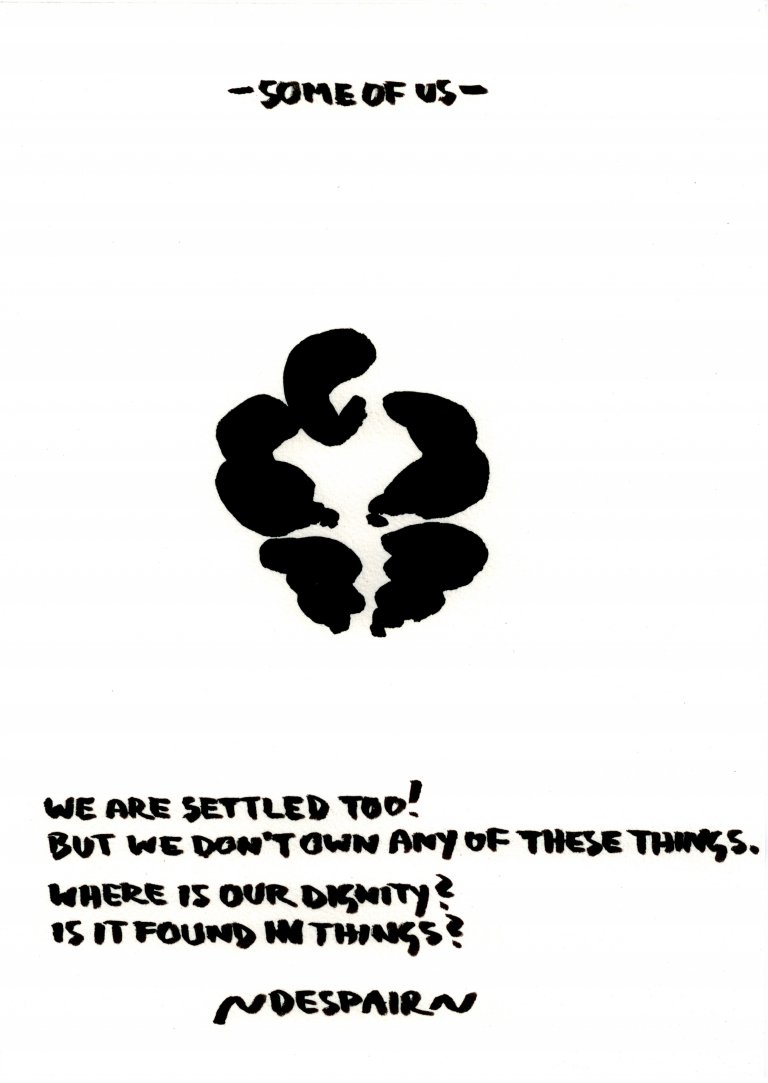
The World of Things, detail, drawing no. 7
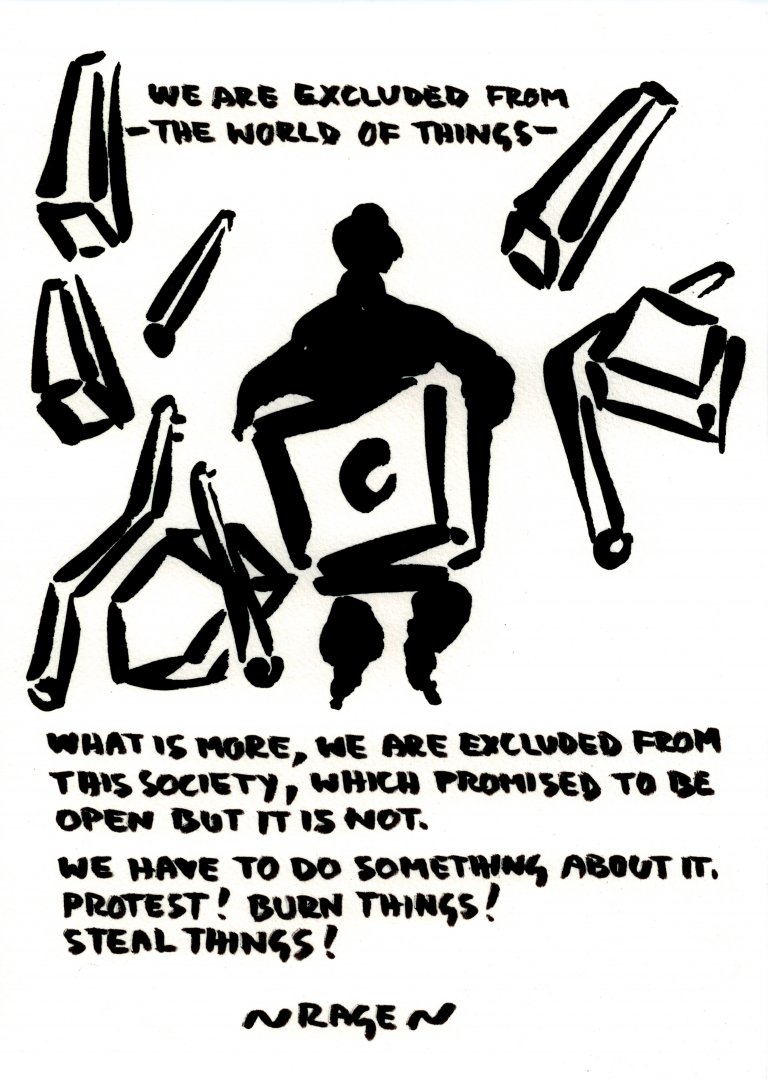
The World of Things, detail, drawing no. 8
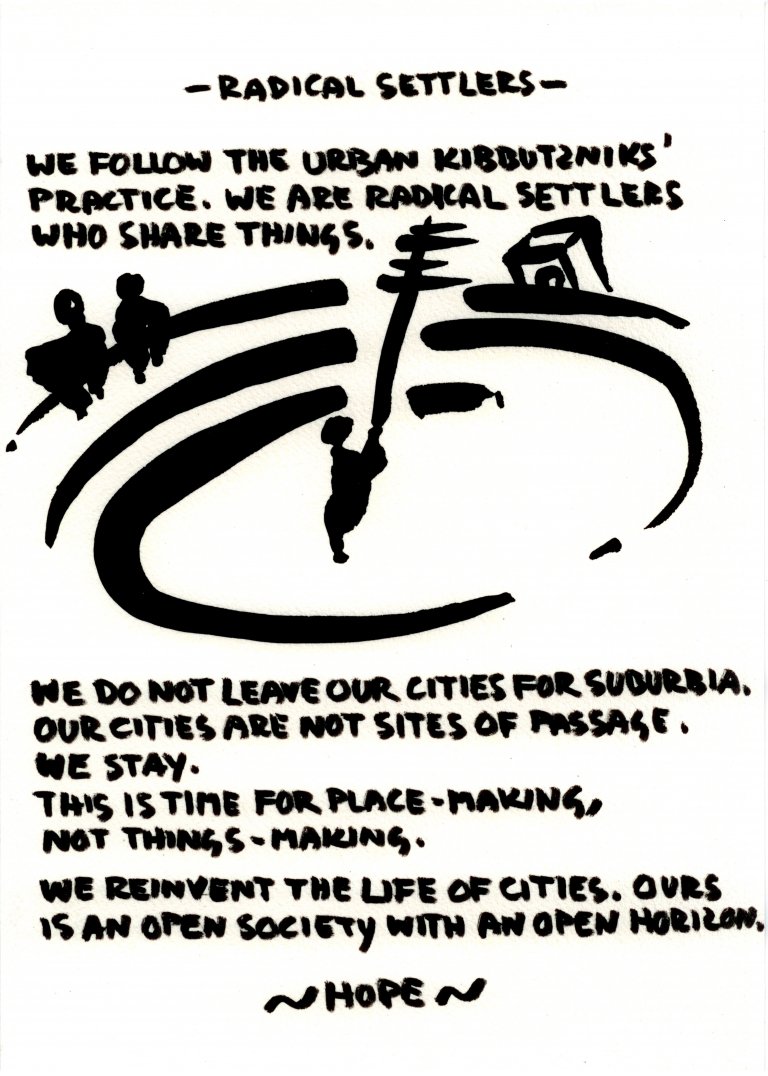
The World of Things, detail, drawing no. 9
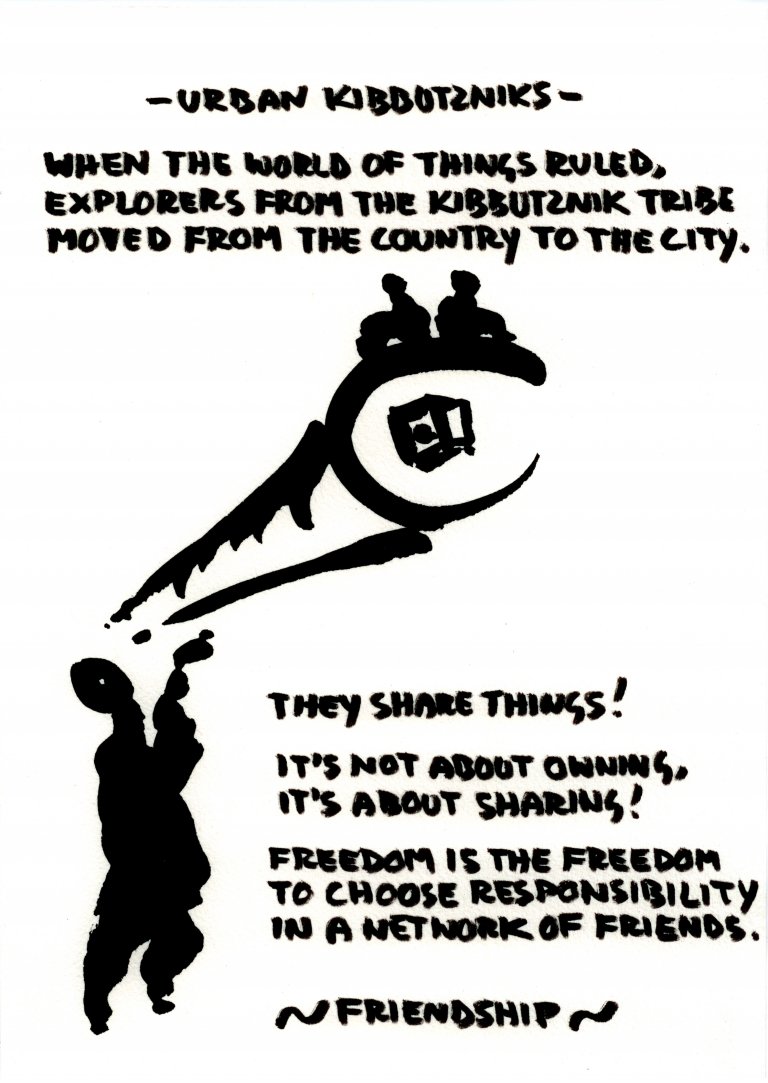
The World of Things, detail, drawing no. 10
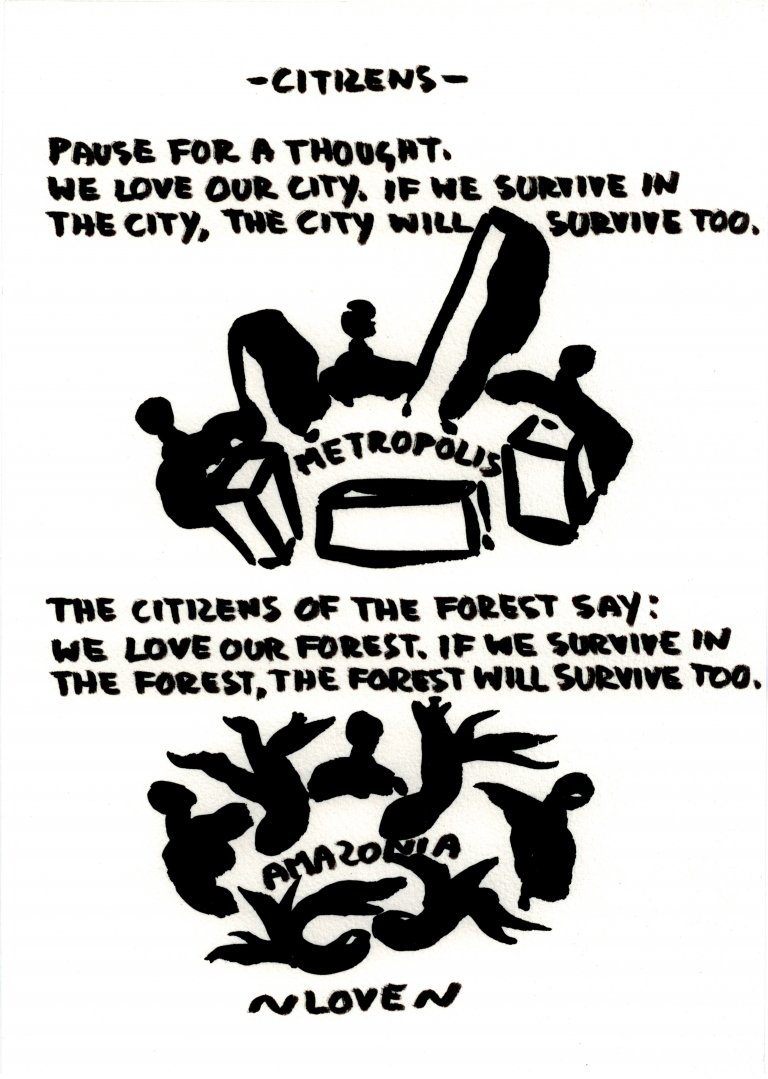
The World of Things, detail, drawing no. 11
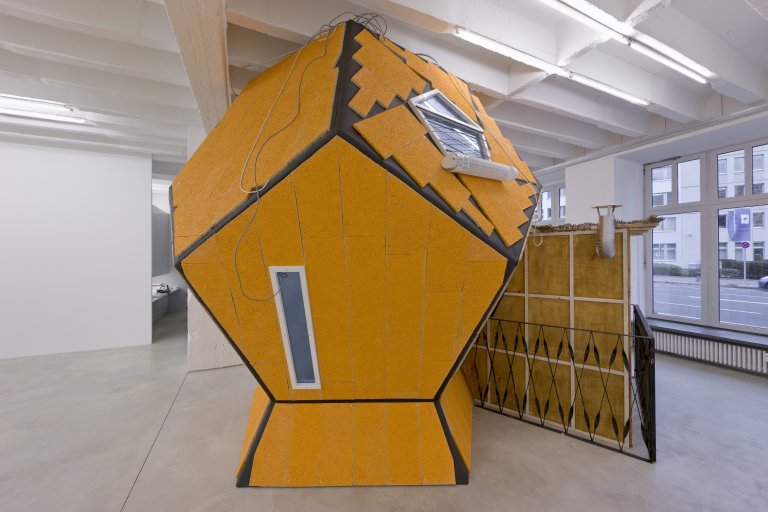
Ramot Polin Unit with Sukkah, 2011, building material and water-supply infrastructure